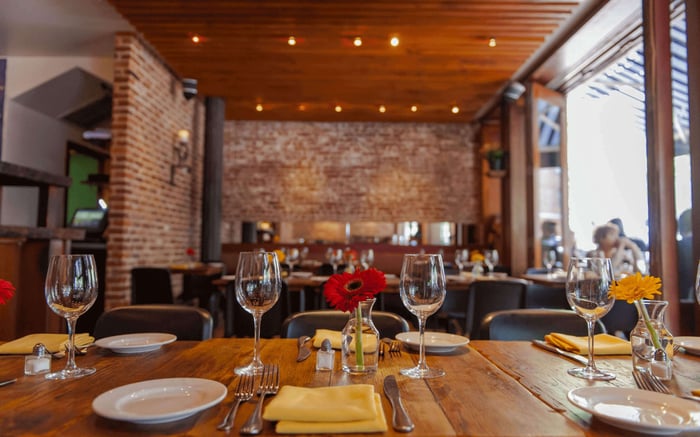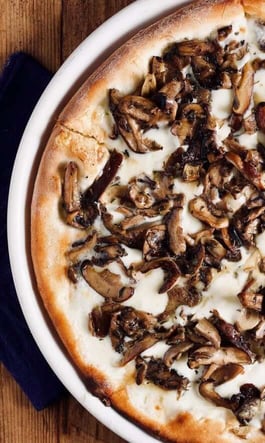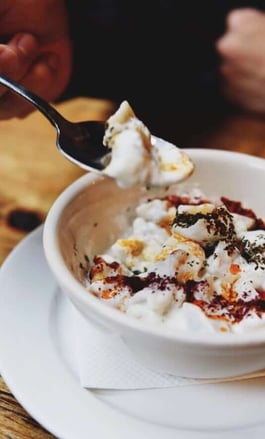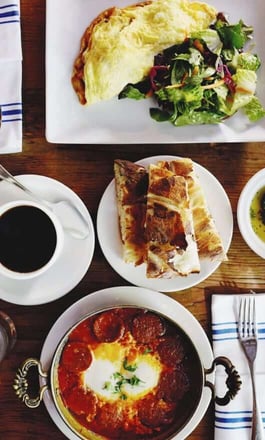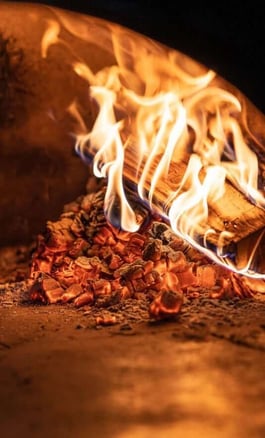The Most Popular Turkish Mezes
Turkish Meze platters are one of the most common dishes on any Ottoman-style menu. Traditionally served with traditional “pide” bread, meze platters are eaten as an appetizer or as a shared dish among friends when drinking chai or Raki. Though each platter can contain a variety of spreads, there are a few dips that are seen on nearly every meze platter.
BOREK
(Also spelled Burek) is a flaky, phyllo pastry made with a variety of ingredients; most commonly spiced feta cheese, minced meat, potato, or spinach. The dough is thinly layered and can be prepared as an individual portion or sliced from a full sheet of borek. Occasionally served garnished with sesame seeds, borek has been one of the most important elements of Turkish cuisine for centuries.
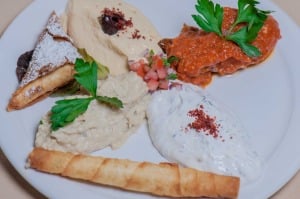
LEBNE
(Also spelled Labne) is a traditional yogurt dish that has been strained to remove the whey, similar to Greek Yogurt. While unsweetened, Lebne has a texture somewhere between yogurt and cheese, and is eaten with either pide bread or vegetables, at times garnished with olive oil. If water is added, Lebe can also be consumed as a beverage.
TURKISH PATLICAN
One of the most popular meze options, Patlican is an eggplant-based puree dip that takes on a unique flavor because the eggplants are often twice-grilled before being blended. The most authentic Patlican eggplants will have been grilled alongside spiced meats and will have absorbed a smoky flavor as a result.
BEYAZ PEYNIR AND HALLOUMI
Translating literally to “white cheese,” Peynir is served at breakfast in addition to its place on the meze platter. An unpasteurized, extra salty cheese, it can be eaten on its own or incorporated into the aforementioned Borek. Halloumi cheese is usually eaten alone or on a salad, and is unbrined mix of goat and sheep’s milk. Often, it is grilled, and has a texture similar to tofu.
KOFTA
A Kofta is like the Turkish version of a meatball that is made from beef or lamb and combined with a specific set of spices and onions. Usually served with grilled tomatoes, the meat itself can also be mixed with eggs or grains to create a heartier texture.
OLIVES
Deceptively basic and usually associated with Mediterranean cuisine, olives are equally vital to Turkish cooking. Served whole and with pits, Turks serve both green and black olives, as a second option aside from the pide to eat the dips with.
DOLMA
Dolma are one of the most delicious aspects of Turkish cuisine. Usually grape leaves (though cabbage is also used in some regions) are stuffed with a mixture of garlic, onion, eggplant, and tomato. Served cold, dolma filling in Turkey is usually much heartier than other countries’ takes, and is less finely ground.
Ordering a Turkish Meze platter is the easiest — and most delicious! — way to sample a variety of Turkish dishes all in one sitting.


